Dispelling the consumer myth of what is involved in creating an account
Overview
In one of my earlier posts I explored the different approaches to handling new customer checkout on e-commerce sites. The approach of forcing new customers to either register or create an account in order to checkout has been around for many years, and in the earlier post I outline why you shouldn’t force new customers to have to register at the start of the checkout process.
In this article I provide 2 rare but extremely valuable techniques that retailers can use to increase their new customer conversion rate, with one of the techniques provided by ASOS who were featured in the original article.
Technique 1 – simply ask for a password during checkout
As I described on my original post, the difference between a guest checkout and a registration/account creation checkout can usually be narrowed down to just 1 piece of information - a password.
Compare this to what most users think of when they see the words ‘create an account’ or ‘register to checkout’ – no matter how many times I moderate user testing sessions and listen to consumers, as well as discussing this issue in training courses with people in the retail industry, the perception is that creating an account or registering is going to take a lot longer than if you could simply do a guest checkout.What to do
During your new customer checkout, simply ask them to provide a password along with their other information such as email address and contact number. Providing you make it clear if there are any password restrictions in place up front (I recommend just having a minimum character limit rather than anything too specific) new customers will simply be able to provide a password and continue through their checkout.
The big nasty barrier of forcing new customers to register or create an account is therefore removed simply by not making a song and dance about this – your button on your login or checkout page for new customers can simply say ‘new customer checkout’ or New Customers ‘continue'.
At the same time as not giving new customers reason to abandon, this approach also ensures that all new customers have login credentials so that you can encourage them to login to their account following their purchase. In turn this should provide you with more opportunities to build a relationship with the customer through their personalised account area and communication strategy.
Live example of this technique
ASOS have recently launched their new checkout, and one of the interesting changes they have made is with the wording of their new customer checkout option.
Originally ASOS said:
“By creating an account at ASOS.com you will be able to shop faster, keep track of the status of your orders and take part in ASOS life” and then worded their call to action button ‘create your account’
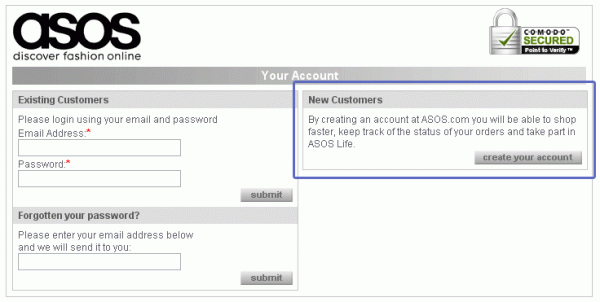
On their old sign-in page ASOS specifically asked new customers to create an account
Now ASOS say:
“New to ASOS?” followed by their call to action button ‘CONTINUE’
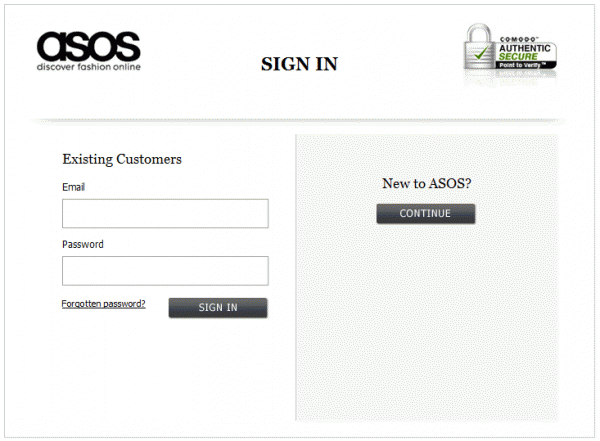
On their new sign-in page ASOS simply ask new customers to continue in to checkout
I must point out that I am extremely impressed with their new sign-in or continue page – it is minimalism personified, and removes any potential barrier to checking out for new customers.
Asking for a password along with everything else
Once new customers click continue they are taken to the first page of checkout ‘About you’. On this page along with filling in your name and email you simply provide a password. That’s it – job done.
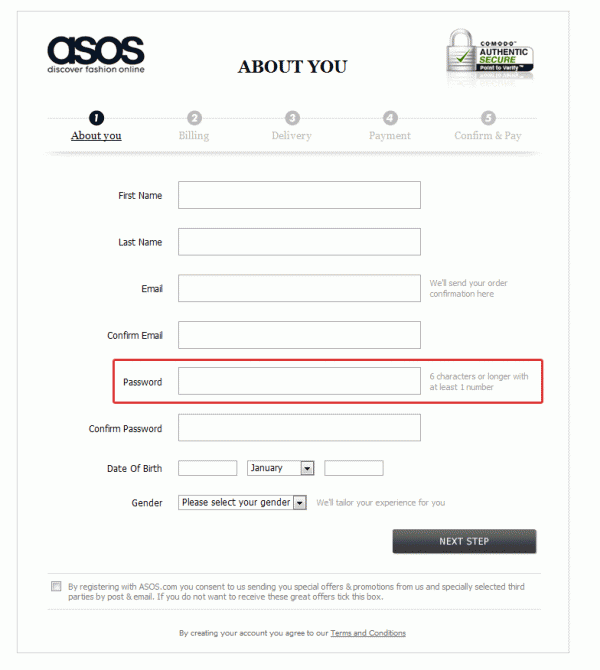
New customers are simply asked to provide a password along with the rest of their contact information
Summary
Although ASOS are actually forcing new customers to register they are doing it in such a way that it doesn’t feel off-putting or creating the perception that it will take alot longer than a guest checkout would take.
Technique 2 – provide the option to create an account within checkout
The fact is new customers are much more likely to simply enter a password to create an account once they are most of the way through your checkout, compared to when the first button they are being asked to click at the start of checkout is ‘create an account’ or ‘register to checkout’.
What to do
What you should do is therefore remove any barriers on the first page of checkout, giving new customers the simple task of choosing to continue to checkout. From here, towards the end of their checkout journey you can ask the customer if they would like to provide a password to create their account. At this stage the benefits for them for creating an account should be made absolutely clear.
Live examples of this technique
As with the ASOS, two more retailers who recognise the importance of not forcing new customers to make decision about creating an account or registering at the start of checkout is Speedo and Lakeland.
Both these retailers provide the option for new customers to create an account within the checkout process, whilst keeping the first stage of checkout simple and inviting for new customers.
In addition you will see that whilst new customers simply need to enter a password, they are giving a variety of key reasons why they should consider creating an account. This reverses the issue retailers who force new customers have, where customers expect that they will have to provide lots more information in order to create an account without always understanding the benefits for them.
Lakeland do this on the order summary page prior to confirming your order
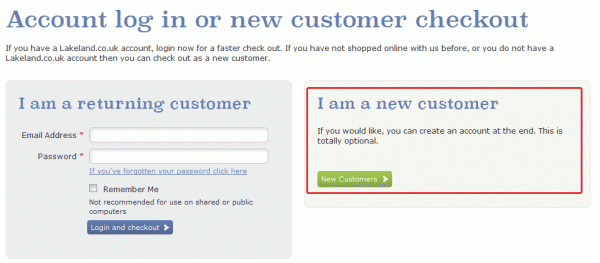
On the Lakeland website, at the first stage of checkout new customers are simply invited to continue in to checkout

On the order summary page during the Lakeland checkout new customers have the option of creating an account by simply entering a password
Speedo do this on the actual order confirmation page
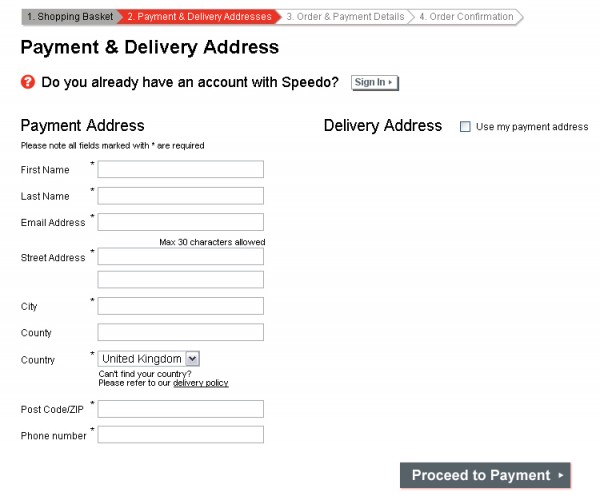
Speedo simply ask new customers to start providing their delivery information rather than forcing them to create an account at the start
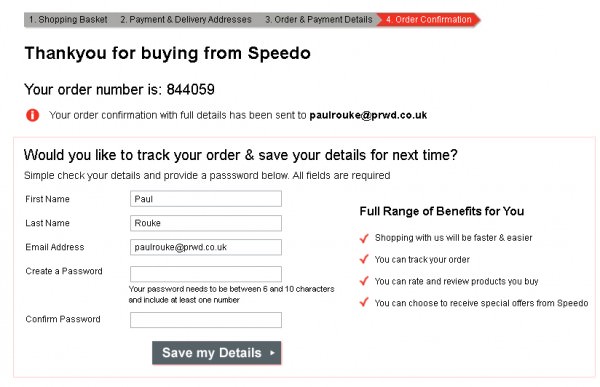
Speedo simply ask new customers if they would like to create an account at the end of checkout
Impact on new customer conversion rate
I can confirm that over 75% of new customers choose to create an account at the end of checkout, which represents an extremely number, especially when you consider that they aren't losing potential new customers at the start of checkout by forcing them to register first.
What can you do to stop new customers abandoning your checkout?
Hopefully this article has provided you with some tips and ideas for how you can provide a more persuasive and user-friendly checkout process for new customers. You may also be interested in viewing more tips and best practice for providing a more persuasive and usable experience.











